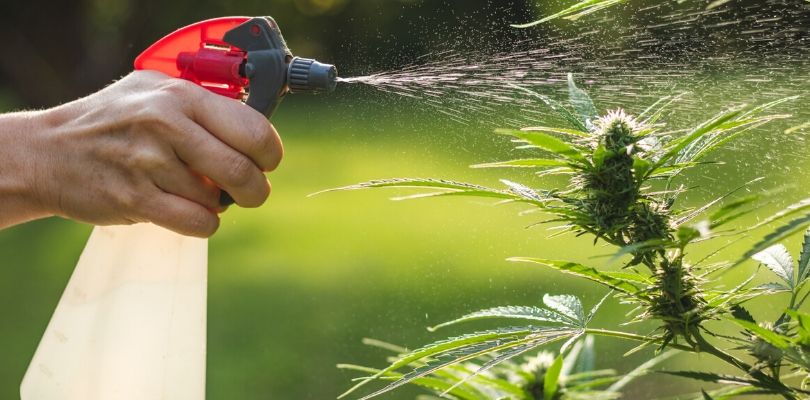How Asthma and Pest Control are Related
If you or a family member have asthma, various factors may play a part in a flare-up of symptoms. Allergens, such as cockroaches, dust mites, and other pests can cause symptoms in some people. Pest control may also trigger an increase in asthma attacks. In some cases, it is a balance between eliminating pests and not causing an increase in symptoms with pesticides.
The Relationship Between Asthma and Pest Control
Pest control can include various biological agents and chemicals used to destroy unwanted organisms, such as insects, rodents, mold and weeds. It may be used indoors or outdoors.
The chemicals are usually classified depending on the type of organism they target and their chemical structure. For example, pesticides include insecticides, herbicides, fungicides and rodenticides. The chemicals used in each of these pesticides can vary.
Certain chemicals are often irritating to the airways, especially to people who have asthma. The Environmental Protection Agency (EPA) considers pesticides one of the environmental pollutants that may play a role in the development or asthma of the worsening of symptoms in those that already have the disease.
It is not entirely clear how pesticides may lead to asthma symptoms, but it might be due to lung irritation, including inflammation or disruption to the endocrine system or possibly both. Some pesticides may increase bronchial hyper-responsiveness.
Can Pest Control Trigger Asthma Symptoms?
As indicated by the EPA, pesticides may be a contributing factor to the development of asthma symptoms. Additional studies also have shown a link. For example, research in the Journal of Environmental Health Perspectives found an increase in asthma symptoms and a higher need for asthma medication in children that lived less than a half mile from areas where sulfur pesticides were applied.
Although pesticides can affect people of all ages with asthma, children may be more susceptible to problems. Kids may absorb higher amounts of the chemicals for a few reasons. For instance, children may play close to the ground at parks and schools where the pesticides have been applied, which allows higher absorption of the chemicals. A young child’s immune system is also still developing and their body is less able to get rid the chemicals.
Pesticides and Respiratory Health
The main way pesticides are absorbed into the body is through the skin and the lungs. It makes sense that the chemicals could affect lung health when inhaled into the airways.
Pesticide exposure may cause lung irritation even in people that do not have a history of respiratory problems. According to the Journal of the American Medical Association, various types of pesticides can trigger airway narrowing and an allergic reaction in anyone. Also, several studies show an association between pesticide exposure and a decrease in lung function.
It is not just people that have asthma who may have an increase in respiratory symptoms due to pesticides. Several studies indicate that the chemicals in pesticides may also increase symptoms of chronic obstructive pulmonary disease (COPD) and can increase the risk of lung cancer.
Although conclusive studies have not been done, exposure to pesticides is also thought to be associated with an increased risk of pulmonary fibrosis. Pulmonary fibrosis causes irreversible scarring of the lungs.
Tips for Safe Pest Control with Asthma
Pest control can be an important part of an asthma management program. Keep in mind, cockroaches, rodents and other unwanted organisms can trigger asthma symptoms. People who have asthma should try to keep their home as free from allergens as possible, which may mean an effective pest control strategy.
An integrated approach to pest control involves using alternatives to traditional chemicals to decrease the presence of pests in the home or workplace. Consider using methods of pest control that do not involve aerosols and liquid sprays that pose a risk of chemical exposure when inhaled. For example, use pesticides that are in a gel formula or bait station, which decrease inhalation.
Snap traps for rodents and sticky traps for insects may help catch an occasional pest without exposing anyone to chemicals. Also, alternative agents, such as diatomaceous earth or boric acid, may also be useful for certain pests. Placing small amounts in cracks and wall voids may get rid of insects.
While you may be able to decrease the use of hazardous pesticides in your home, it is difficult to prevent exposure to all pesticides. For example, pesticides are often used in public parks, agricultural grounds, and schools, but there are some steps you can take to reduce risks. Consider the following tips:
- Buy organic fruits and veggies, which have fewer pesticides.
- Take shoes off before coming inside to prevent tracking pesticides from outdoors.
- Make sure garbage is removed from the home regularly to decrease insects and the need for pesticides.
- Whenever possible, use fewer toxic methods to remove pests from inside your home.
- If you are spraying pesticides outdoors, follow directions carefully and wear the correct protective equipment.
